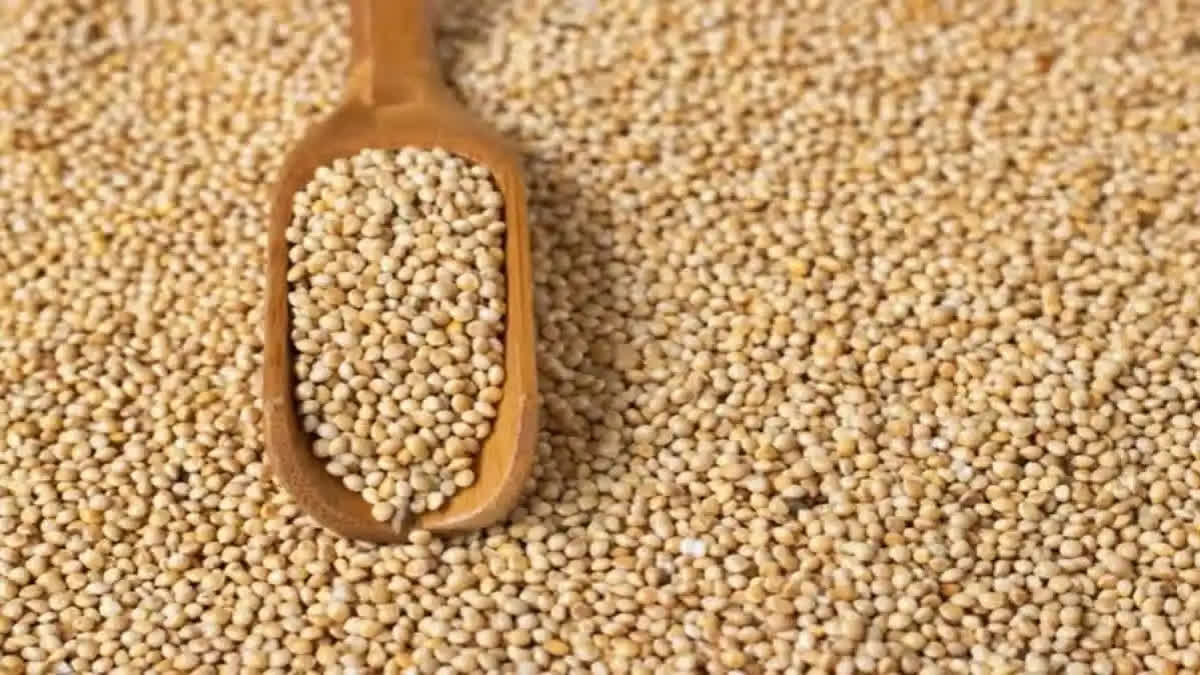Kashipur(Uttarakhand): The Centre's constant push for millet crops has increased the yearly income of 75% of the millet farmers between 10% to 20% in Uttarakhand, reveals a study conducted on over 2,100 farmers by the Indian Institute of Management, Kashipur. The study has been funded by the Indian Council of Social Science Research.
The study was conducted to address the marketability challenges of millet production and identify effective strategies to increase its economic presence. The sample size for the survey was collected from the major hilly regions of the state such as Pithoragarh, Joshimath, Rudra Prayag, Chamoli and others. The study says that millet production in the region of Uttarakhand plays a significant role in the socio-economic contribution and overall agricultural sector. Millets are considered the staple food for the local community, enhancing their food security and nutrition by reducing their dependence on other cereal crops.
The report titled "Millet Production in Uttarakhand: An Empirical Analysis of its Socio-Economic Impact and Marketability Challenges" has been published by the institute after a six-month-long study conducted by four senior professors and five data collectors.
The International Year of Millet 2023 has played a crucial role in raising awareness about millet as a sustainable crop worldwide and increased the demand for millet-based products both nationally and globally.
The finding says that the recent push by the Centre as well as the state government created a demand for millet crops in the market but the farmers are unaware of it. Besides, most farmers are growing millet for self-consumption instead of earning a profit. "Most of the farmers growing millet for self-consumption are not using it as a money crop like rice and wheat," says assistant professor Shivam Rai of the IIM Kashipur, the Principal Investigator of the study.
Apart from Shivam Rai, the co-investigators of the study are - Dr. Deepak Sangroya and Dr. Gaurav Kabra, Associate Professors at OP Jindal Global Business School and Dr. Nishant Singh Assistant Professor at Bennett University. .The study reveals that the government schemes designed to support millet farmers are becoming futile because of the communication gap and the language barrier. "Millets are a sustainable crop which is not only nutritious, and healthy but also easy to store and doesn't damage the soil," said Professor Rai.
"The cultivation of millets also preserves the cultural heritage of farming practices, making the organic food system more resilient," says the report. The study also made recommendations to implement various short and long-term strategies to support the stakeholders, who can work together to harness the potential of millet production and promotion in Uttarakhand, ensuring a resilient and prosperous future for farmers and the local community.
The study which was unveiled in the presence of academicians, researchers, millet experts, farmers, and small-scale millet entrepreneurs also addresses the significance of millet production in Uttarakhand and its potential for socio-economic development.
Dr. Pushpa Lohani and Dr. Jitendra Kwatra, two senior professors of GB Pant University of Agriculture and Technology were the keynote speakers of the event. Dr. Lohani said that the state government has recently announced the minimum support price (MSP) of Madwa variety of millet crop to Rs 35.78 kg but the farmers are clueless and losing profit to middlemen, "The history of growing millets can be found in Harappan Civilization. The consumption of Millets continued in India when the Green Revolution hit the country. With the help of fertilizers, we were able to grow more rice and wheat, we lost our ancient food Millets in between," she said.
The land cultivation area of millets dropped from 40 to 20% after the green revolution, she pointed out. Referring to research conducted by Karnataka University on millet farmers at Dharwad, she said farmers recorded a twofold jump in their income. The research project's findings help in identifying the potential barriers to the production, consumption, and commercialization of millets. This will aid in devising strategies for improving the livelihoods of producers and the supply-value demand of millet.
Read More
Karnataka Council chairman gets a taste of millet icecream launched at International Trade Fair
Maharashtra: World Record of Cereal Khichdi created in Chandrapur
PM Modi lauds 'House of Himalayas' brand to promote local products



